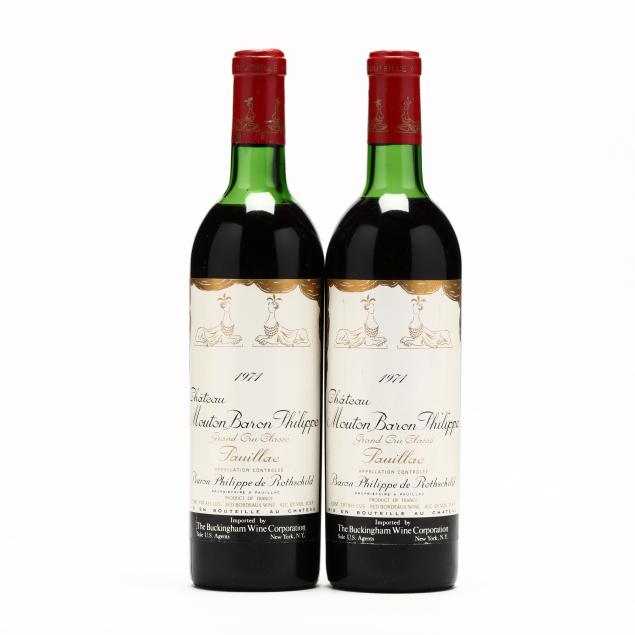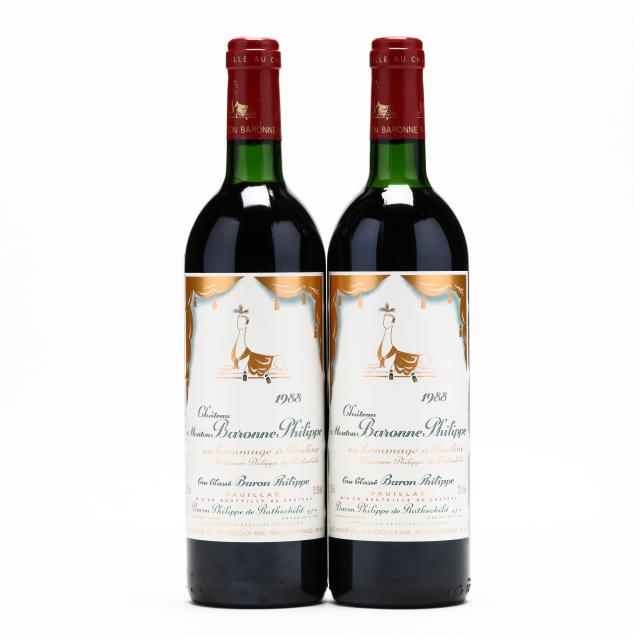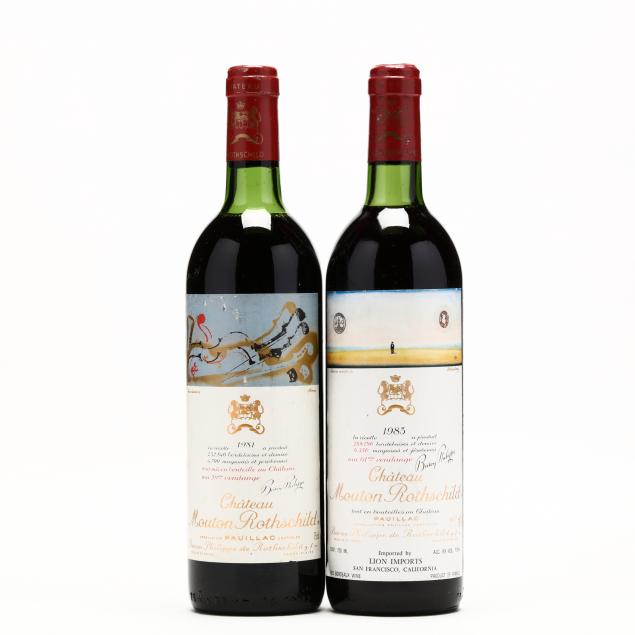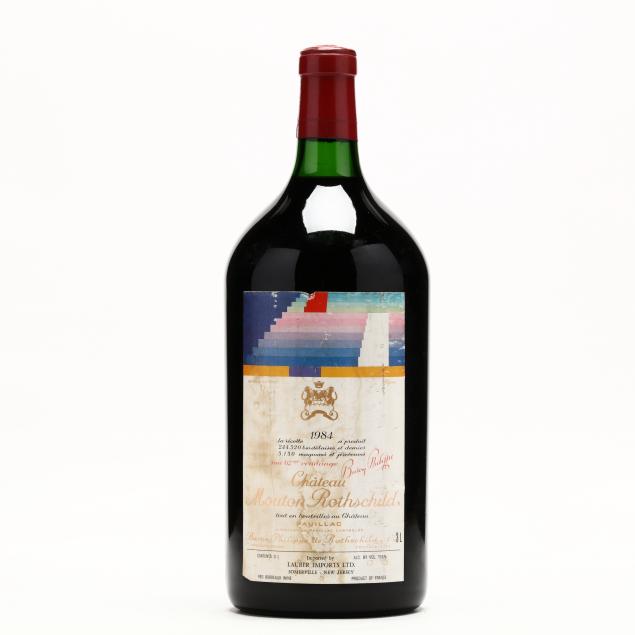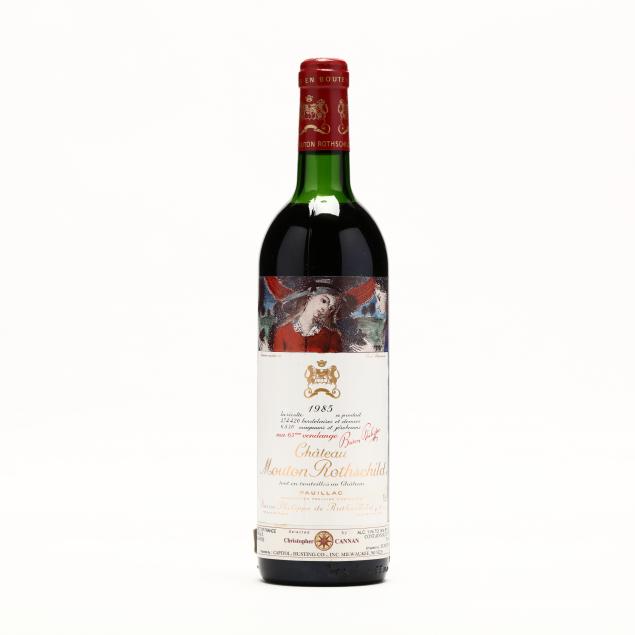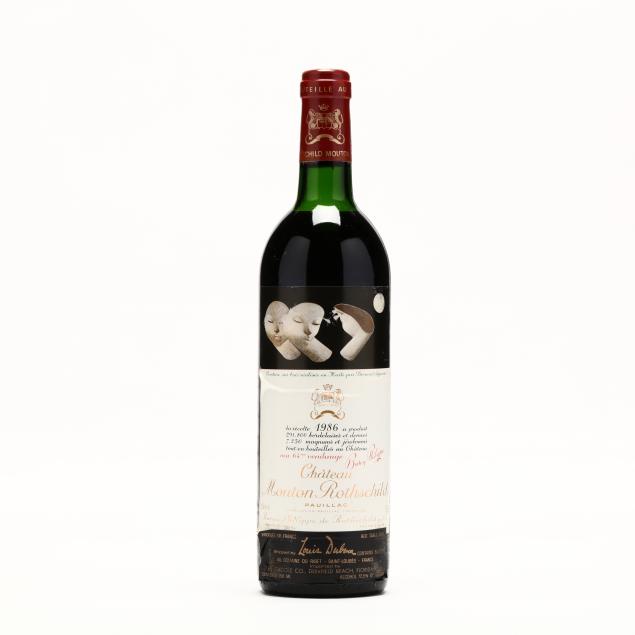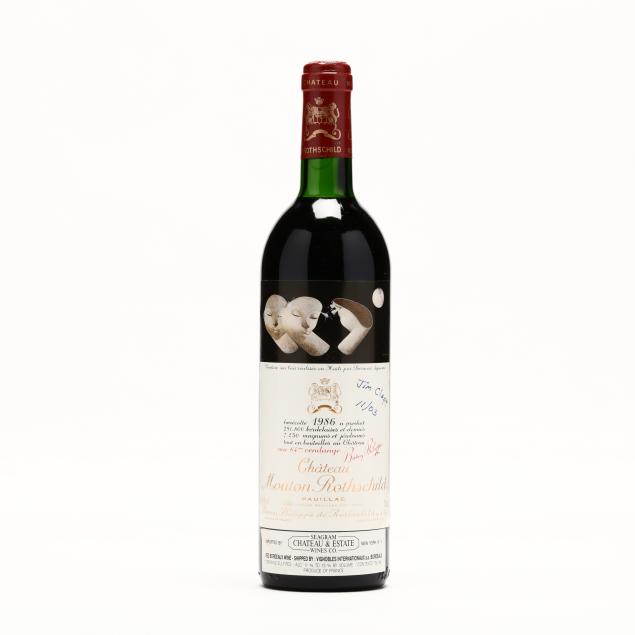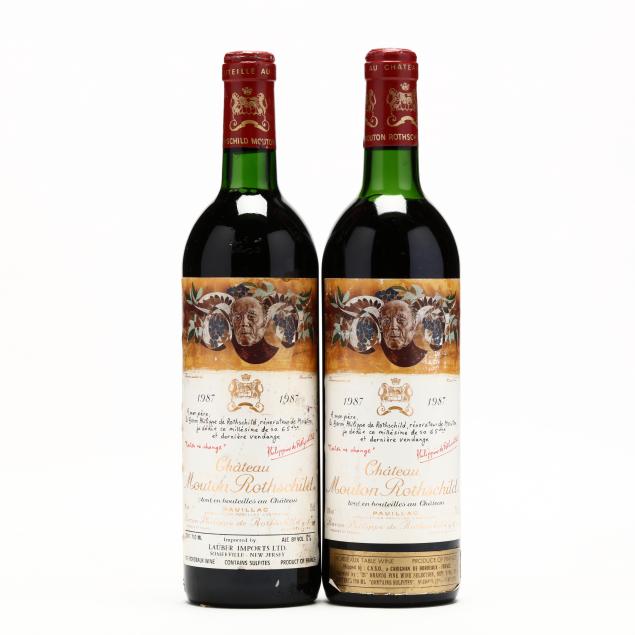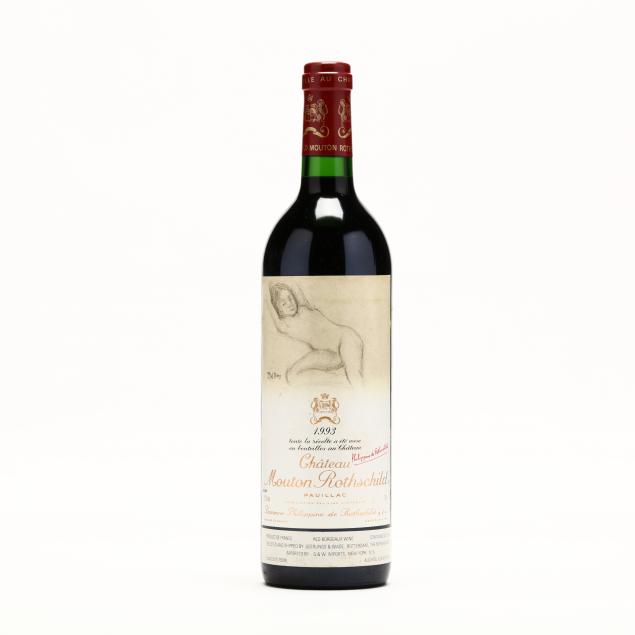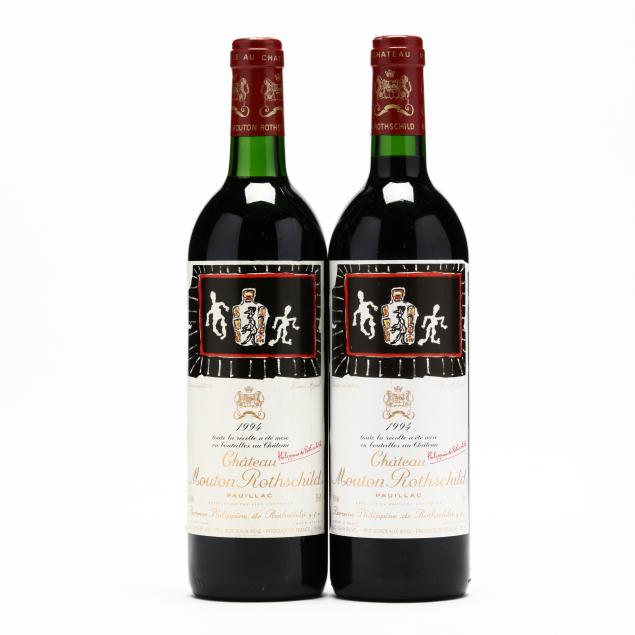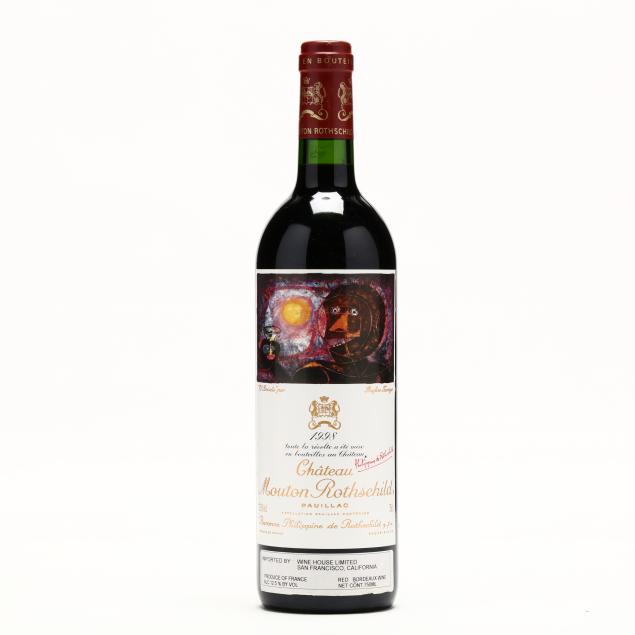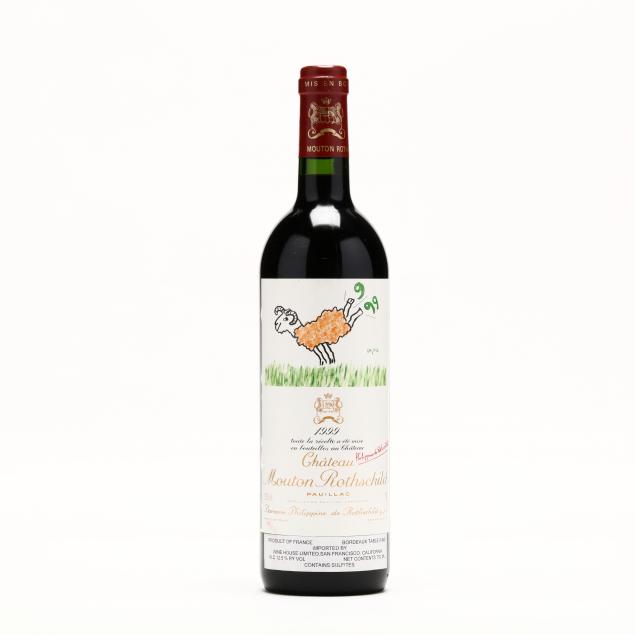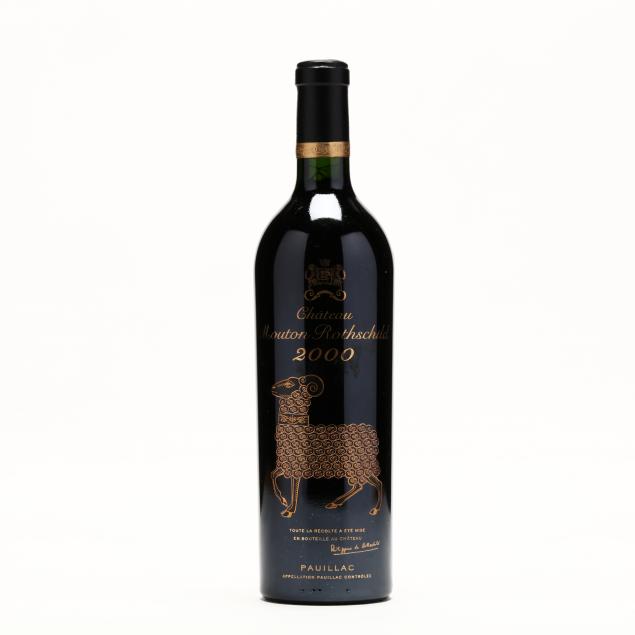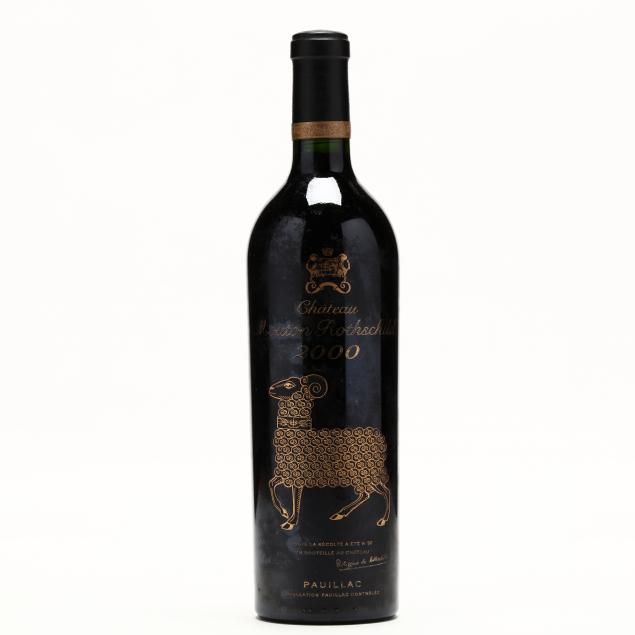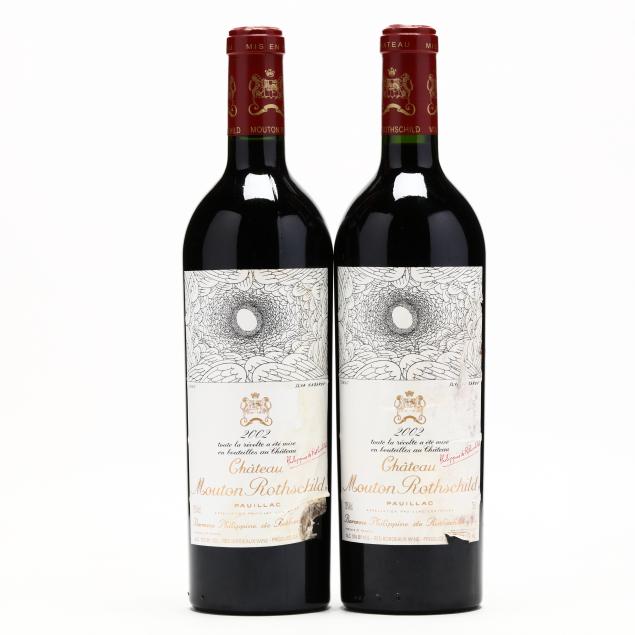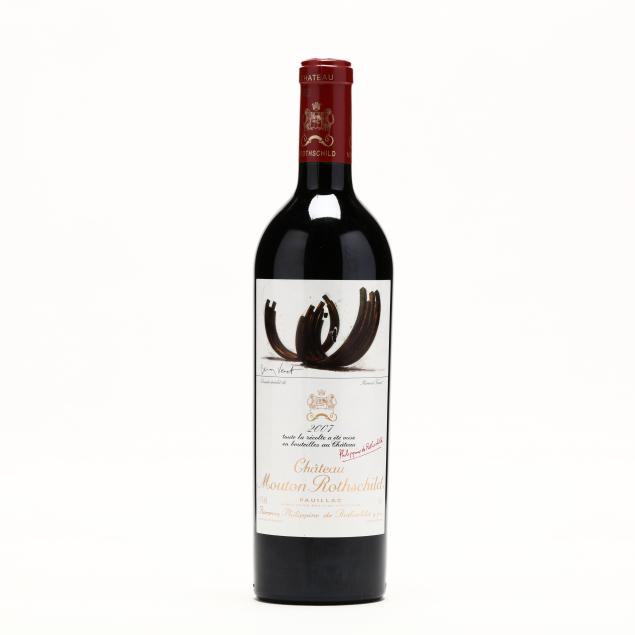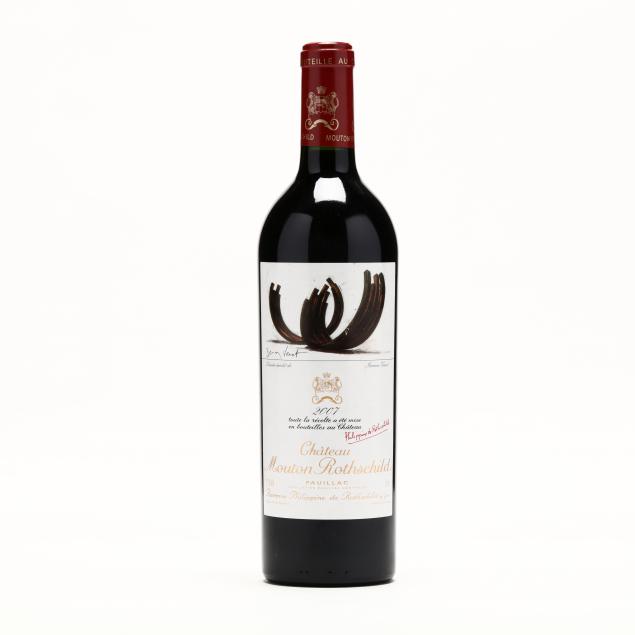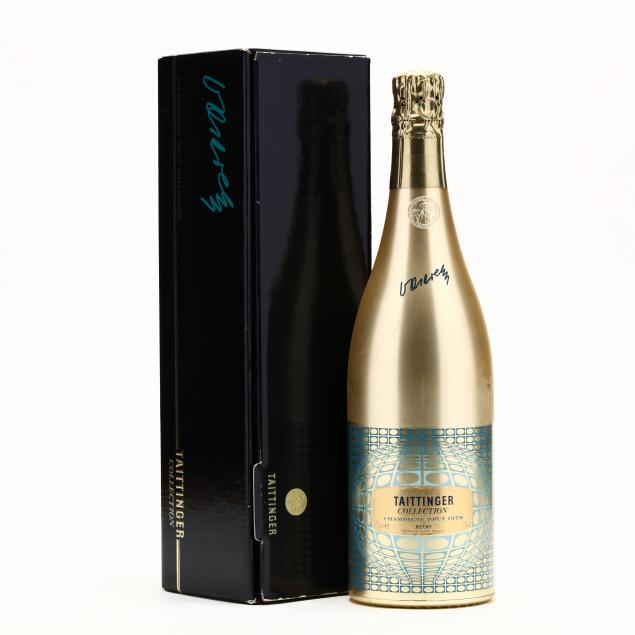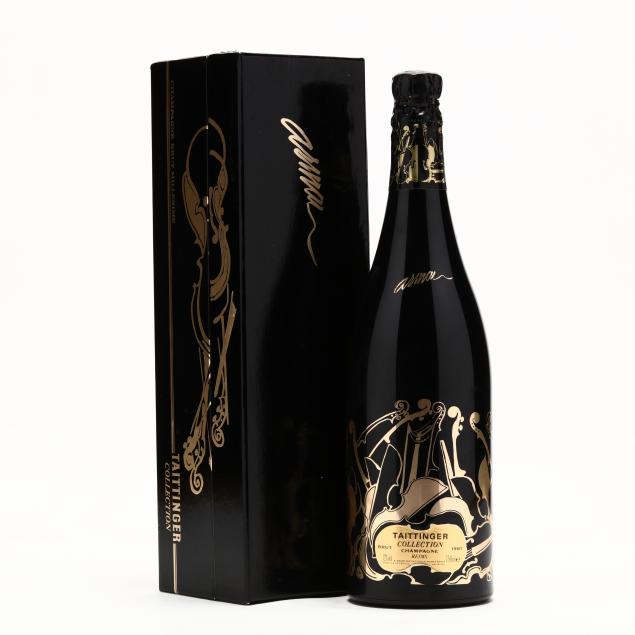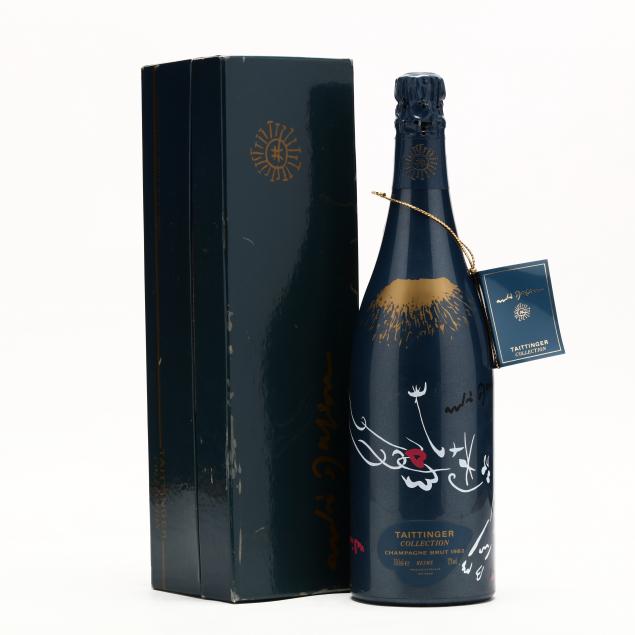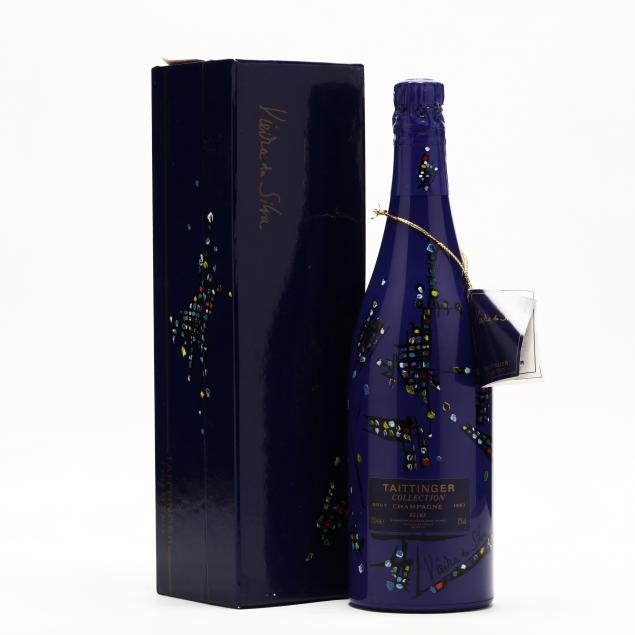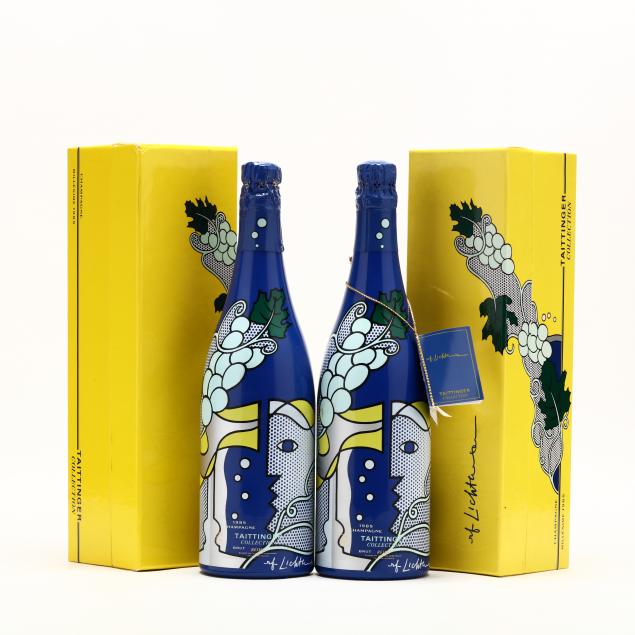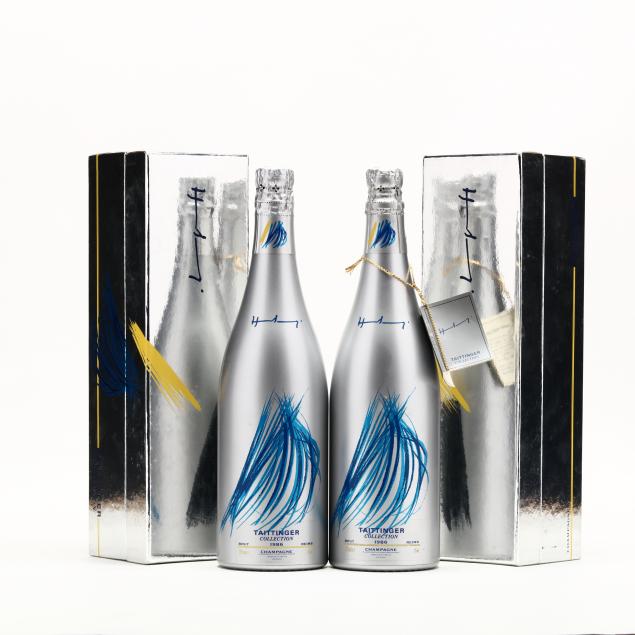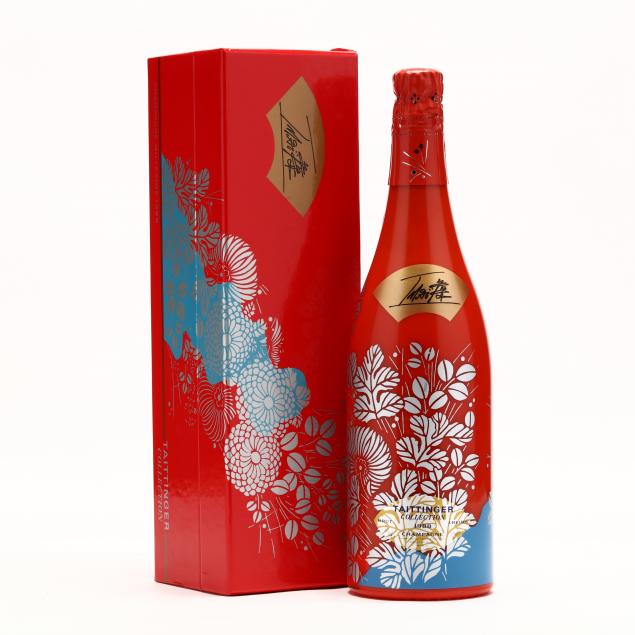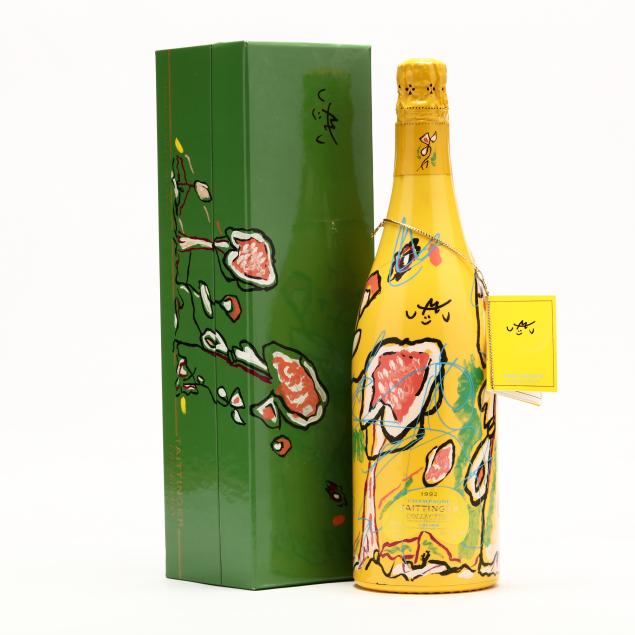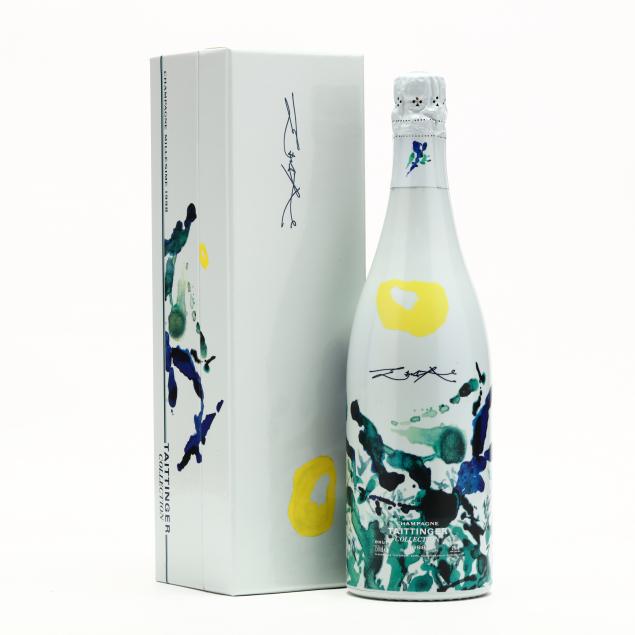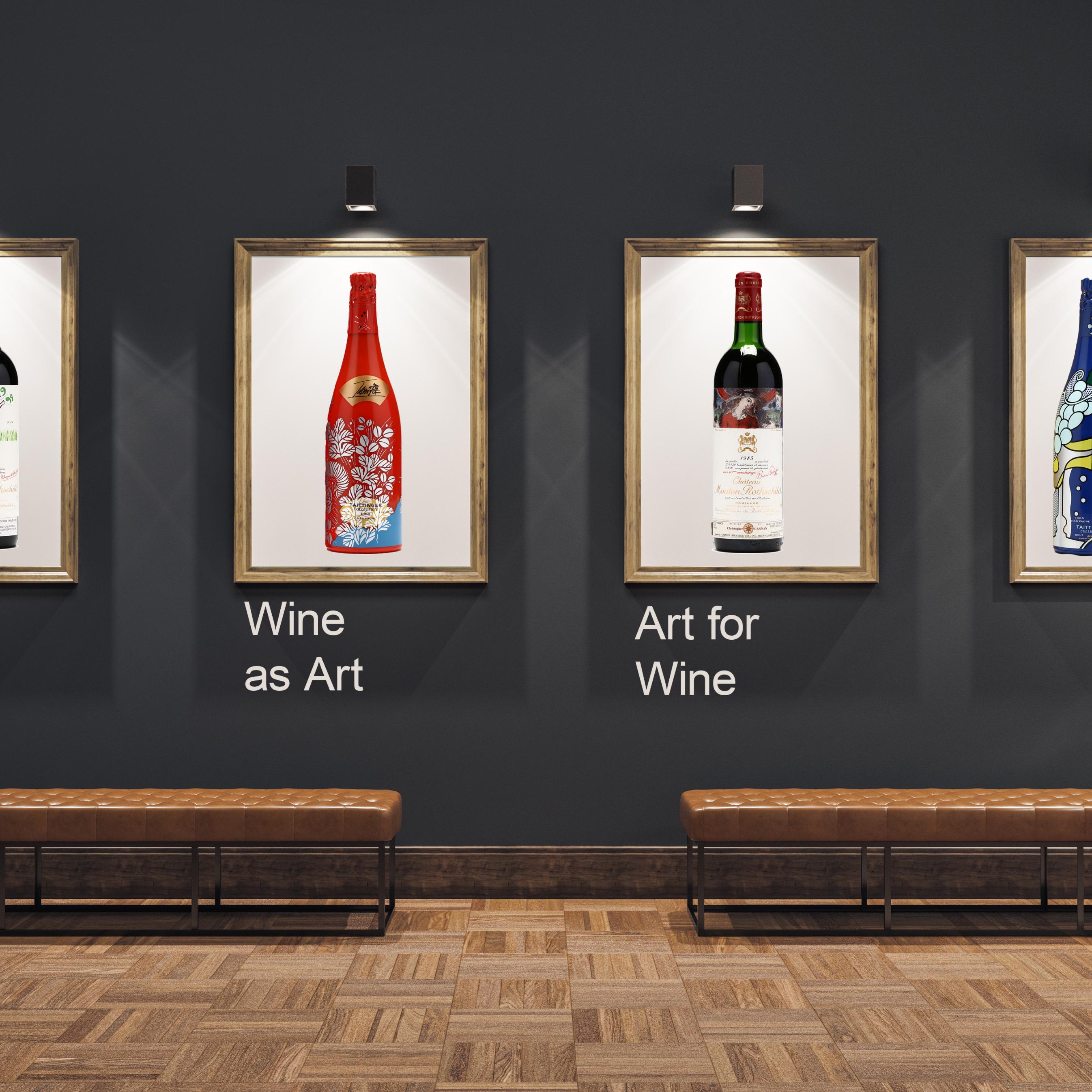
When a human being applies creative skill to shaping the material world with the intention of communicating their particular experience of it, the outcome is art. We make art in the form of paintings and furniture and poetry and gardens and jewelry and food and on and on as far as the imagination stretches. And yet linguistic efficiency demands that we apply the shorthand of the word “art” more narrowly. And so we most closely associate “art” with its visual representations and then must make the mental leap between paint and canvas and other art forms.
In the wine world, art is the winemaker’s interpretation of the land and the harvest in liquid form. In order to drive home the connection between what’s in the bottle and “art”, wineries simply put “art” on their labels. The near-complete roster of Taittinger Collection bottles, and a long list of Mouton Rothschild - the original wine/art collaboration - in our December 3rd Fine Wine Auction had us delving into the root of what has become a tradition of commissioning artists to create works for wine labels.
In 1945, the Baron Philippe de Rothschild, who was Jewish, returned to a freshly liberated France from England, where he had fled to serve in General de Gaulle’s resistance after being arrested in Algeria by the Vichy government. His estranged wife, who converted to Judaism to marry him, was arrested by the Gestapo and died in the Ravensbruck concentration camp. The Chateau Mouton Rothschild had been occupied and used as a headquarters by the Wehrmacht, and the vineyards decimated. There was little left in the way of grapes or morale with which to produce a 1945 vintage of Mouton. It was therefore with heartbreaking spirit and resolve that the Baron, a great art lover, commissioned the obscure artist Philippe Julian to create a label for the ‘45 Mouton Rothschild boasting Churchill’s “V” for victory.
In the wine world, art is the winemaker’s interpretation of the land and the harvest in liquid form. In order to drive home the connection between what’s in the bottle and “art”, wineries simply put “art” on their labels. The near-complete roster of Taittinger Collection bottles, and a long list of Mouton Rothschild - the original wine/art collaboration - in our December 3rd Fine Wine Auction had us delving into the root of what has become a tradition of commissioning artists to create works for wine labels.
In 1945, the Baron Philippe de Rothschild, who was Jewish, returned to a freshly liberated France from England, where he had fled to serve in General de Gaulle’s resistance after being arrested in Algeria by the Vichy government. His estranged wife, who converted to Judaism to marry him, was arrested by the Gestapo and died in the Ravensbruck concentration camp. The Chateau Mouton Rothschild had been occupied and used as a headquarters by the Wehrmacht, and the vineyards decimated. There was little left in the way of grapes or morale with which to produce a 1945 vintage of Mouton. It was therefore with heartbreaking spirit and resolve that the Baron, a great art lover, commissioned the obscure artist Philippe Julian to create a label for the ‘45 Mouton Rothschild boasting Churchill’s “V” for victory.
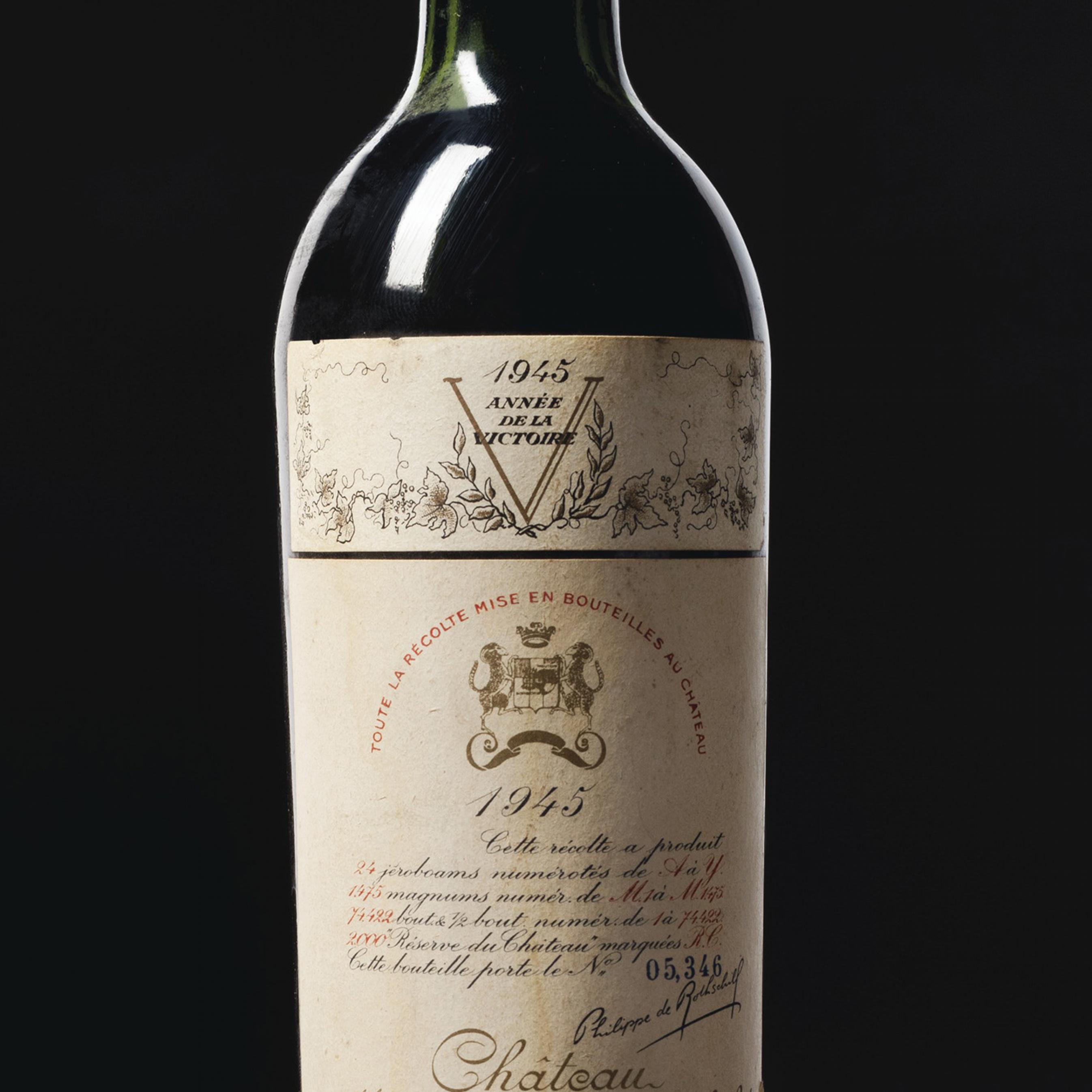
The 1945 "V for Victory" Mouton Rothschild
This was the first in an almost unbroken stretch of artist-created labels for the wine. In 1946, Jean Hugo, the great grandson of Victor Hugo, designed a label depicting the dove returning to the ark over a vineyard, bearing the olive branch of peace. The only two years between then and now in which Mouton Rothschild has departed from their artistic tradition have been 2000, when the figure of the golden Mouton ram was enamelled directly onto the bottle, and a 2003 bottle that commemorated the 150th anniversary of Nathaniel de Rothschild’s purchase of the Mouton estate. Our auction includes bottles of Mouton with artwork by some of the most notable artists of the 70s, 80s, 90s, and 2000s, such as Yaacov Agam, Wassily Kandinksy, Keith Haring, and Rufino Tamayo. We are also offering two bottles of the highly collectible 2000 vintage.
All manner of wineries have been inspired by the Mouton tradition of drawing the connection between wine and art through their label design, but few have taken it to the level that the champagne producer Taittinger has. Claude Taittinger, who ran the champagne house from 1960-2006, was, like the Baron Philippe de Rothschild, a great art lover. After coming to the realization that he wanted to align his wine with high art as opposed to something more plebeian, he set about to make the distinction clear through a series of bottles wrapped in a laser-sealed sleeve designed by a contemporary artist.
Unlike Mouton, Taittinger Collection bottles are reserved for especially fine vintages. Like Mouton, Taittinger partnered with some of the most respected artists of the day to create his bottles. The complete Taittinger Collection is comprised of 14 bottles by artists such as Victor Vasarely, Andre Masson, Roy Lichentenstein, and Robert Rauschenberg. All vintages of the Taittinger Collection can only be bought on the secondary market - they were produced in such limited quantities that they are no longer available from the winery itself.
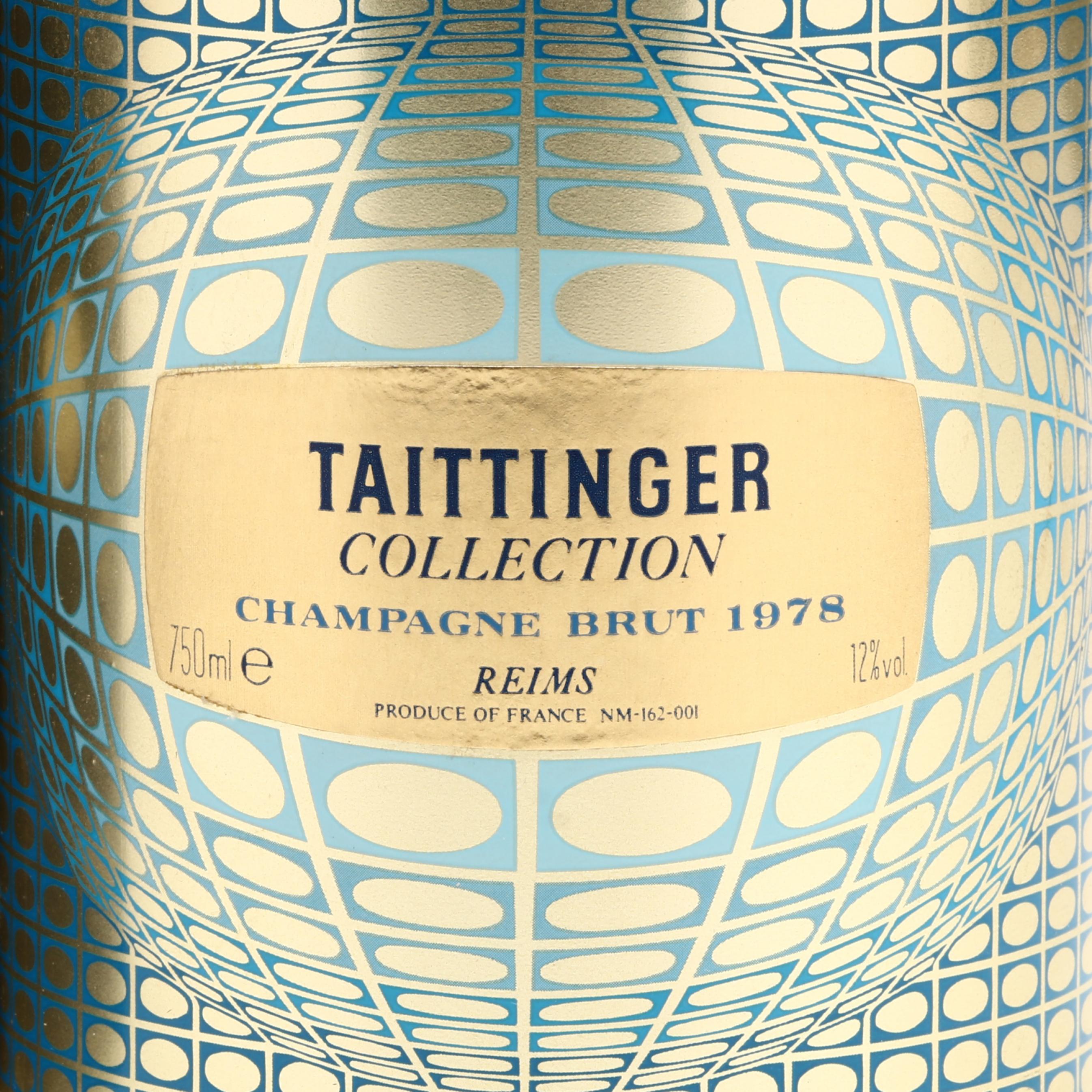
The 1978 Taittinger Collection - the first in the series - with artwork by Victor Vasarely (released in 1983)
Below are the beautiful, collector-worthy, artistically significant bottles of Mouton Rothschild and Taittinger from our Fine Wine Auction.
Fine Wine
Thursday, December 3rd
View Full Results
Fine Wine
Thursday, December 3rd
View Full Results


